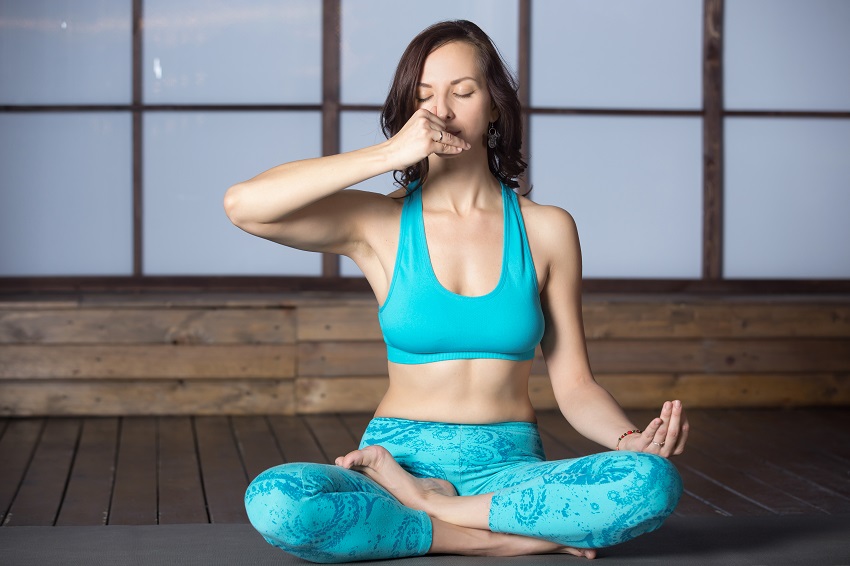Meditative Asanas:
There are many ways to practice yoga. You can attend a class in which movement is the main focus. Another class may be dedicated to mindfulness meditation. Breathing exercises can be the focal point in yet another yoga class you attend. Is it possible, though, to combine all three of these styles together in one yoga session to produce beautiful meditative asanas?

Absolutely! This article will focus on combining yoga, meditation, and pranayama into one practice.
It is actually not difficult to combine these yoga styles. When joined together, you develop a set of meditative asanas that create a fulfilling and comprehensive yoga practice.
Meditative asanas are comprised of a Sitting Posture, a Meditation Practice, and a Pranayama exercise. They form a yoga style that enhances concentration, provides a relaxed state of mind and body, a sense of ease and calm, and reduces stress. Let’s start by describing each component of the meditative asana.
Sitting Postures:
Some of the primary sitting postures to choose from within a meditative asana practice are Lotus Pose (Padmasana) and Accomplished Pose (Siddhasana).
Lotus Pose (Padmasana):
This is a standard meditative sitting posture and also is an advanced hip opener.
- Sit upright in a cross-legged fashion. Each foot is positioned on the opposite thigh.
- Your arms down to your side with your palms resting in your lap or on your knees.
Alternatively, if this posture is too difficult, you can use the modified version, Half Lotus Pose, as your sitting posture. Only position one foot on your opposite thigh while the other remains resting on the floor.
Accomplished Pose (Siddhasana):
This seated posture is considered one of the oldest sitting positions designed for meditation. Accomplished Pose (sometimes known as Perfect Pose) may be more of an approachable meditative asana when compared to Lotus Pose.
- Rather than crossing one leg over the other, the yogi places one bent leg in front of the other.
- Your shins will rest parallel to each other rather than one stacked on top of the other.
- Be sure to sit up tall to improve the length and space in your spine.
- If you need added support, sit on a cushion, pillow, or folded blanket while on your yoga mat. You’re also welcome to sit-up against a wall or in a chair if you require extra back support.
Related Article: Common Wall Yoga Postures For Beginners: Yoga Off The Wall!
It is important to establish a comfortable meditative asana. It will help promote ease, calm, and steadiness as you progress into your meditative practice.
Once you have obtained a comfortable sitting position, you are ready for the next portion of your meditative practice.
Meditation Practices:
Meditation comes in all forms. However, if you’re new to the practice, there are some basic techniques you can try as you explore meditative asanas. Here are two simple meditations that you can practice while comfortably sitting in your yoga pose.
Mindfulness Meditation:
This style of meditation is about practicing full awareness and concentration on one object, thought, or task. The process helps you stay in the present moment so you’re able to release repetitive thoughts, negative belief systems, or other external distractions that do not serve you in a positive way.
One mindfulness meditation practice is called Candle Gazing. It is a simple act of staring at a candle flame for 10-20 seconds at a time. It enhances your ability to focus and concentrate which clears and cleanses a stressful mind.
Loving-Kindness Meditation:
This is a lovely meditation (sometimes called “metta” meditation). The practice focuses on sending warm thoughts, loving intentions, and kindness to yourself, your friends and family, your enemies, and the broader world community.
Repeat simple phrases like “may I (you/we) be peaceful.” May I (you/we) be healthy.” There are great benefits to this practice, some of which have been scientifically proven. For example, the Loving-Kindness Meditation is said to reduce the physiological stress response, suppress body inflammation, and even improve cognition, emotions, and physical well-being.
Related Article: Relaxation Techniques – Simple Ways To Relax The Body And Mind
Pranayama Practices:
To round out the meditative asana yoga practice, the addition of Pranayama will cultivate a full and rich experience for the practitioner.
Once you have settled into your seated position and decided upon your meditative practice, it is time to introduce Pranayama. These are breathing techniques that involve controlling aspects of your breath to generate a healthier mind and body.
Here are two Pranayama practices you can use during your meditative asana session.
Ujjayi Pranayama (Victorious Breath):
Ujjayi breathing uses your throat muscles to produce the breath flow while air moves through your nostrils.
- With your mouth closed, draw in breath as if your mouth was open (like you were gasping for breath in slow motion.)
- With a slight force from the back of your throat, exhale as if your mouth was open (like fogging a mirror.)
- Continue with steady breaths in and out.
- The process generates heat within your body, while also creating a sense of calm.
Samavritti (Balancing Breath or Counting Breath)
Samavritti is a wonderful breathing exercise that will produce balance, ease, and calm, throughout your body.
- As you inhale gently through your nose, count slowly to four.
- At the top of the breath, hold for four counts. Do your best not to tense up; the idea is to remain relaxed as possible.
- As you exhale, count for another set of four.
- Repeat for several rounds.
The intention of this pranayama practice is to reduce/eliminate mental chatter and to help manage stress levels.
Now you’re ready to combine all of these elements together to create a comprehensive yoga session. Choose a comfortable seated yoga posture. Once in place, decide the type of meditation you’d like to practice. While engaged in your meditation, remain focused using a Pranayama exercise.
Final Thoughts On Meditative Asanas!
To begin, spend 3 to 5 minutes with your meditative asana. As you gain more practice, increase the time. You’ll find that with consistent practice, you’ll have a clearer mind. Furthermore, will be able to concentrate better, and help release stress from your mind and body.
Consequently, this will lead to better thoughts about yourself and others, and an overall improved short and long term health outlook.





